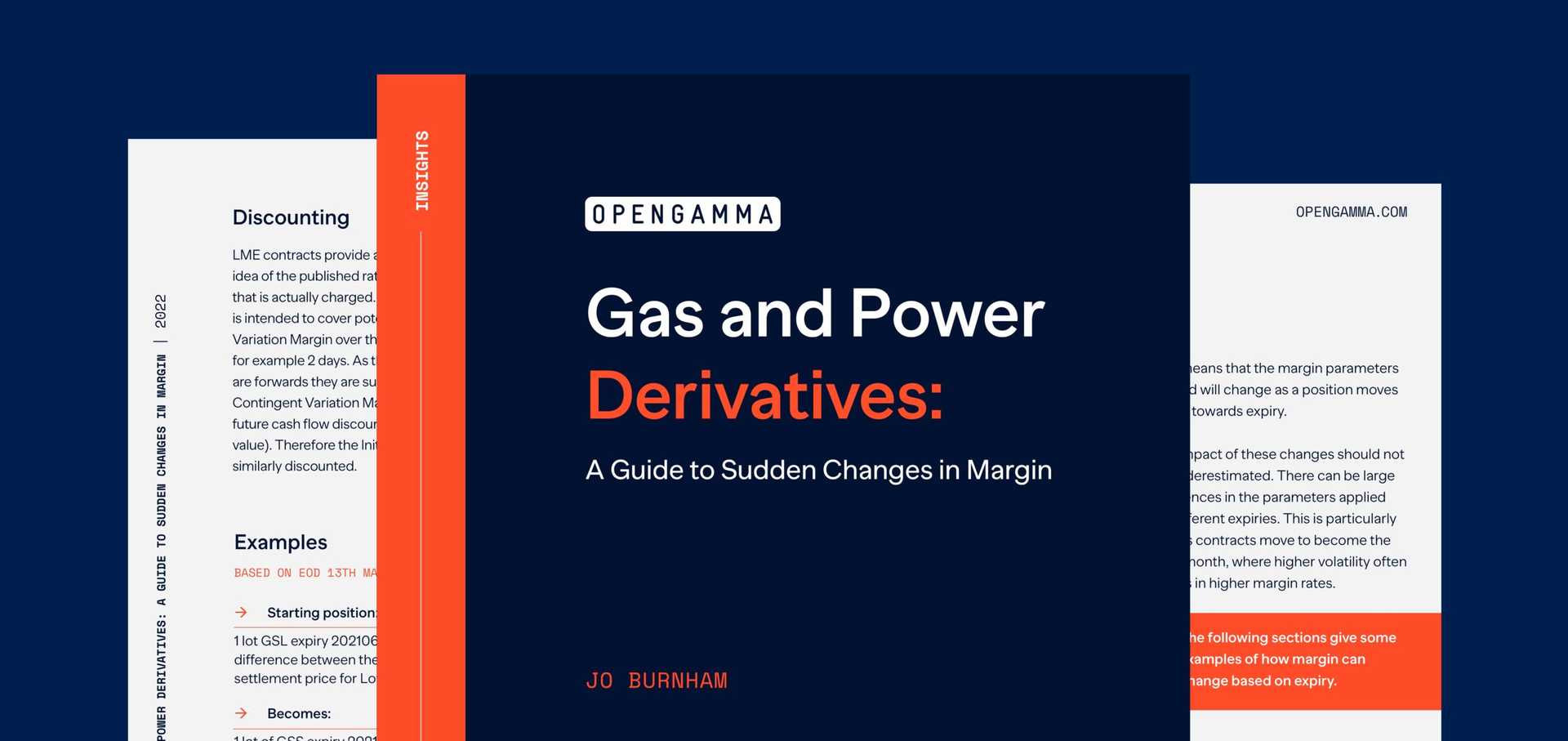The Natural Gas market had already been subject to high volatility caused by the COVID pandemic, but following the Russian invasion of Ukraine it has seen further significant price changes – both up and down.
The trading of EU natural gas derivatives highlights some of the risks surrounding the markets:
- Many of the participants are not financial institutions. They may be utilities or specialist commodity trading firms. These tend to have lower liquidity and therefore can have issues when trying to meet margin calls – some of which have been significant during recent market volatility.
- The market tends to be more concentrated than other markets, with less participants and a reliance on a few key liquidity providers. This can make it difficult to unwind large positions, putting further pressure on prices.
- Natural Gas prices impact the cost of most production processes, leading to further impact on the economy. This has seen high levels of inflation that has resulted in central banks raising interest rates in an effort to bring it back under control. And this in turn has had a significant impact on the cost of funding any margin requirements.
Increased costs of trading on ETD markets, particularly rises in Initial Margin requirements and the need to pay cash Variation Margin, have led to many firms moving their risk to OTC. Recent analysis shows that OTC as a share of the market may have doubled from around 15% to 30%.
But what exactly is the impact on margin, both for individual firms that move from ETD to OTC, but also on the way that any change in the structure of the market may change the margin calculations of the CCPs.
Initial Margin
Many firms moved Natural Gas positions from ETD to OTC because of the level of the margin requirements. On ICE the margin rates were already high after the end of COVID restrictions, but following the invasion of Ukraine they nearly doubled.
On EEX the margin rate is defined as a percentage of value, so as soon as prices began to rise so too did the margin requirements. In addition the percentage applied was increased to take into account the heightened volatility, further adding to the pressure on liquidity.
The change in OTC Initial Margin requirements was much less marked, mainly because ISDA only review their parameterisation of the SIMM methodology on a yearly basis (or they did until this year when they decided to introduce a mid-year update).
What this means is that, at the time of the highest volatility, it was advantageous from an Initial Margin perspective to move risk to OTC – especially if taking advantage of the €50M regulatory threshold. But that is not necessarily the case now. ETD margins have reduced significantly whilst OTC margins increased at the end of 2022 following a SIMM upgrade.
Variation Margin
For ETD contracts, profits and losses are paid on a daily basis in the form of Variation Margin. As prices rose at the start of the Ukraine crisis this need for daily cash flows caused major liquidity issues for firms holding short positions. Some were forced to close these positions out and if possible reopen similar positions OTC in order to keep hedges in place.
On OTC markets, profits and losses will be paid at the end of the contract, resulting in better alignment between cash flows on derivative and physical positions. This was a real advantage as many of the firms impacted by the liquidity issues actually had overall profit making portfolios.
Now however, some firms that moved to OTC are wondering whether they might be better returning to ETD trading. As prices fell back down again from the early highs, they would have been receiving daily profits on short positions, but if they had traded the same risk OTC profits would not be paid out until the end of the contract.
Reduced ETD Liquidity
In a default, CCPs need to close out the positions of the defaulting member. If liquidity moves away from exchanges towards OTC then obviously this becomes harder for the CCPs to achieve. And the costs will increase too with potentially larger bid/ask spreads.
Margin is used to cover losses in the event of a default. Variation Margin makes sure that profits and losses are up to date, Initial Margin is to cover potential future losses from the time of default to the time of close out. But the additional costs based on any difficulty in finding counterparties caused by the available liquidity also need to be covered.
All CCPs require additional collateral to cover concentration and liquidity risk, and any reduction in the size of the available open interest is likely to see these charges increased. At present this additional margin tends to be calculated on an ad-hoc basis, but as CCPs move away from SPAN towards new VaR based methodologies this component will become a core part of the margin requirement.
Conclusion
The volatility in the Natural Gas market caused by the Russian invasion of Ukraine made many firms consider whether they were better trading ETD or OTC. By moving away from cleared derivatives they were exchanging Liquidity Risk for Counterparty Risk.
However, depending on market conditions, the margin requirements and directions of any cash flows will vary, and such a move may no longer be the best option. This is made even more complex by the number of variables that need to be taken into account:
- Initial Margin requirements based on the different algorithms and parameters.
- Cash flows, comparing Variation Margin with realised profits and losses.
- Collateral and funding costs.
- Available liquidity and potential Additional Margin
From a cost and risk perspective, firms need to continually consider the best way to trade the required risk. In order to do this it is important to have tools available that can look both pre-trade at the optimal venue to place a trade and post-trade to rebalance the position to keep costs at a minimum.




